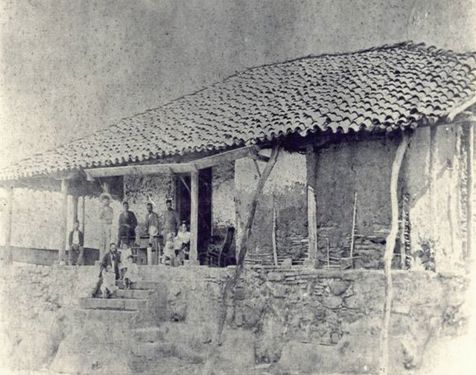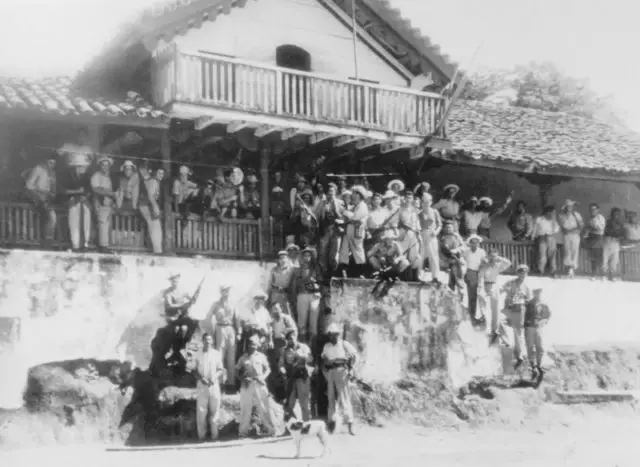Hacienda Santa Rosa is a national historic monument of Costa Rica, located in the province of Guanacaste, in the Liberia Canton, Santa Rosa District, it is one of the largest and oldest farms in the country, since 1663 there are data of its existence as a site where agricultural and livestock activities were carried out through the years until 1966. Currently, Hacienda Santa Rosa is located within the Santa Rosa National Park, in the Guanacaste conservation area, and is managed by the National System of Conservation Areas of Costa Rica.
It is mainly known for being the site where the battle of Santa Rosa took place, in which Costa Rican patriots fought William Walker and his filibusters on March 20, 1856, within the framework of the National Campaign of 1856-1857. General José Joaquín Mora Porras directed the Costa Rican troops in the combat against the foreign invaders which were under the command of Hungarian colonel Louis Schlessinger.
Location
La Casona de la Hacienda Santa Rosa is located in the canton of La Cruz in the province of Guanacaste, north of Costa Rica, 35 km from the town of Liberia, capital of the province, and 270 km from the capital of the country, San José. Part of the Hacienda Santa Rosa is also shared with the canton of Liberia.
History

Before 1863 Santa Rosa was only a large house in the center of several farms, until Don Inocente Barrios Muñoz, the owner at that time, included it in the Public Registry with the name of Finca Santa Rosa. The Hacienda Santa Rosa was considered since the mid-eighteenth century as one of the most important in the Guanacaste region, due to its extension and the resources it had.
In 1663 the general measurement of what the land of the Santa Rosa Hacienda would be was done for the first time is done, at the request of Don Juan Martín de Villa Faña, who had requested those lands from the Crown of Spain. The stone pens, built in the year of 1700 (approximately), are located near the Casona, in them, you can still see the “bramadero”, and following to the south the immersion baths, in which the cattle were bathed and cured. Subsequently, the lands were valued and transferred to Ensign Don Joseph de Rivas in 1736.
The hacienda formerly was founded between 1740 and 1750. Its name is already mentioned in 1751. At that time Santa Rosa and El Pelón belonged to the same owner, Captain Juan Antonio Santos de San Pedro, in these lands 1500 cattle were grazed along with thirty mules and one hundred and thirty foals that were boarded annually.

Farm work consisted of the cultivation of corn and the manufacture of cheese. La Casona de la Hacienda Santa Rosa was built around 1750; the protocols began to be mentioned from 1751, being its first owner the Spanish captain Juan Santos de San Pedro. At the beginning of the 19th century, the descendants of Captain Santos de San Pedro sold the estates, acquiring the Santa Rosa a rich priest based in Liberia, who lived in the house only on weekends, making an oratory at the end of the corridor on the side North, to the east, where Sunday Mass was officiated for all the neighbors of the other estates.
In the mid-1830s Santa Rosa was acquired by Don Agustín Gutiérrez y Lizaurzábal, who was the father-in-law of General José Joaquín Mora Porras, commander in chief of the expeditionary army during the National Campaign of 1856-1857 and leader of the battle waged at Santa Rosa, which of course he knew perfectly.
In 1849, the children of Mr. Agustín Gutiérrez sold the farm to the Carthaginian landowner Mr. Ramón Gómez, who was the owner at the time of the filibuster invasion on March 20, 1856. The Gomez family maintained the property until the early 1890s, when they sold it, proceeding the new owners, the Barrios Sacaza family, to demolish the old house to build another one on the same lime bases, expanding the house and giving it the design it currently has, conserving to this day as original elements of the battle of 1856 the stone stands, the foundations, the stone walls that form the lateral corrals to the house, the roads and the surrounding wooded places.
In 1919 the balcony is built. Its last private owner was Luis Roberto Gallegos, and more recently the Ministry of Culture and the National System of Conservation Areas have been responsible for carrying out the necessary restorations to maintain this historic site.

